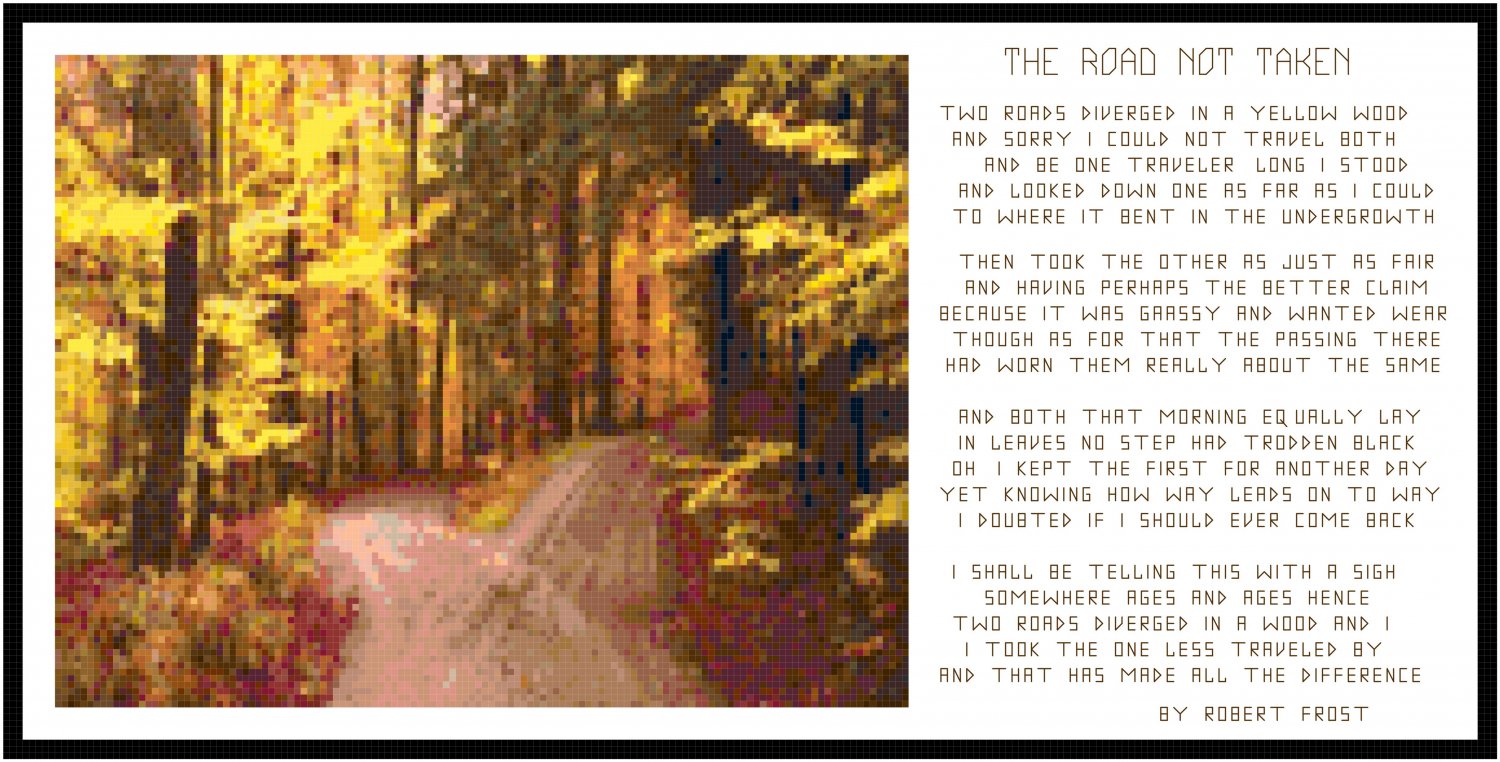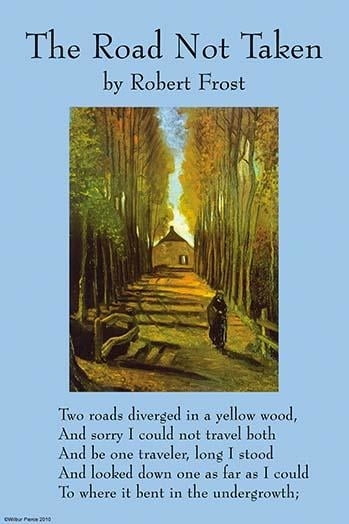

During this time, he met such literary figures as Ezra Pound, an American expatriate poet and champion of innovative literary approaches, and Edward Thomas, a young English poet associated with the Georgian poetry movement then popular in Great Britain. In 1912, having been unable to interest American publishers in his poems, Frost moved his family to a farm in Buckinghamshire, England, where he wrote prolifically, attempting to perfect his distinct poetic voice. Three years later the Frosts’ eldest child died, an event which led to marital discord and which, some critics believe, Frost later addressed in his poem “Home Burial.” In 1897, Frost entered Harvard University as a special student, but left before completing degree requirements because of a bout with tuberculosis and the birth of his second child. He published a chapbook of poems at his own expense, and contributed the poem “The Birds Do Thus” to the Independent, a New York magazine. After graduation, Frost briefly attended Dartmouth College, taught at grammar schools, worked at a mill, and served as a newspaper reporter. In 1892, Frost graduated from Lawrence High School and shared valedictorian honors with Elinor White, whom he married three years later. He imagines himself in the future telling the story of his life and claiming that his decision to take the road “less traveled by,” the road few other people have taken, “has made all the difference.” Author Biographyīorn in San Francisco, Frost was eleven years old when his father died, and his family relocated to Lawrence, Massachusetts, where his paternal grandparents lived. He does make a decision, hoping that he may be able to visit this place again, yet realizing that such an opportunity is unlikely. Although the paths look equally attractive, the speaker knows that his choice at this moment may have a significant influence on his future. The speaker of the poem must choose one path instead of another. The poem relies on a metaphor in which the journey through life is compared to a journey on a road. Like many of Frost’s poems, “The Road Not Taken” is set in a rural natural environment which encourages the speaker toward introspection. That is why, I think that the speaker didn’t take the less traveled one, it was actually his wrong idea.“The Road Not Taken,” first published in Mountain Interval in 1916, is one of Frost’s most well-known poems, and its concluding three lines may be his most famous. Hence, the road may look shorter but it was actually not what it seems.



And thinking the way easier than the other made the speaker wrong. Though his/her choosing looks easy it was as hard as the other road. Here, the speaker may be thought of, between two roads the second one is easy to pass. Whatever the way looks like, short or long, humans have to do hard work to get something. However, they need to take anyone’s decision so that they can gain the goal and it is impossible to take every way at once. Human life has many ways to reach its goals. Here, in my point of view, these two roads are a sign of choice or decision of human life. Both roads are confusing the speaker, about his/her decision. “The Road Not Taken” poem is about two roads that are divided in different directions. No! I don’t think the road that the speaker took was really the less traveled one.


 0 kommentar(er)
0 kommentar(er)
